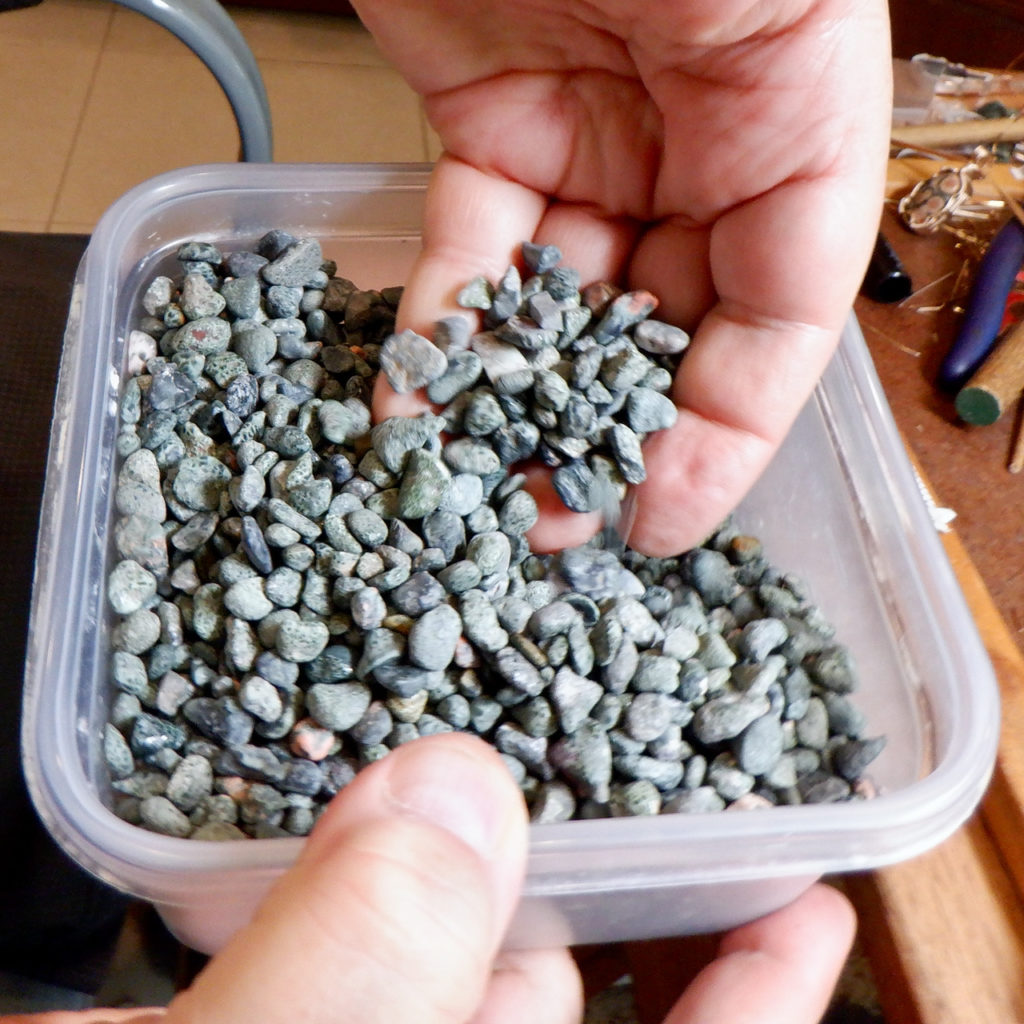
The blog pictures may be a bit out of the order they were accomplished, but you’ll get the idea by reading the text under each picture.

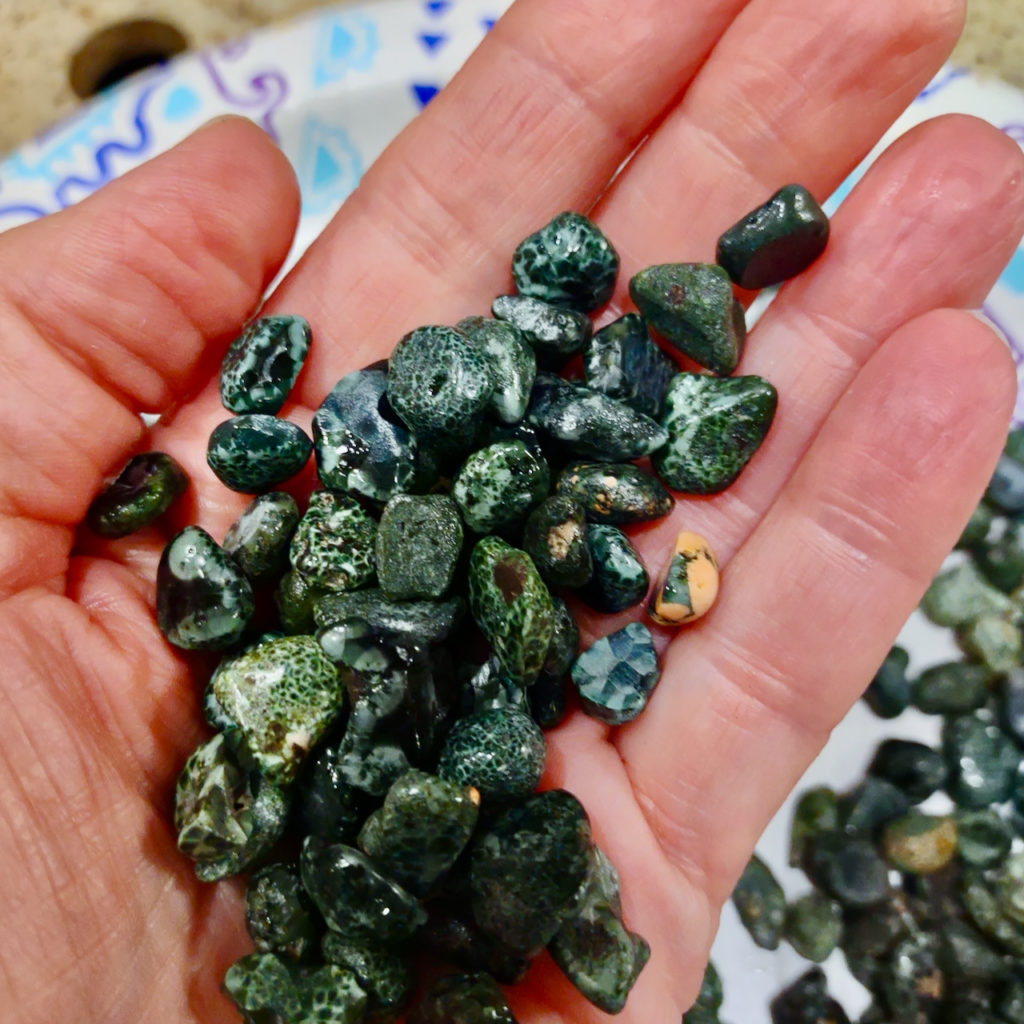
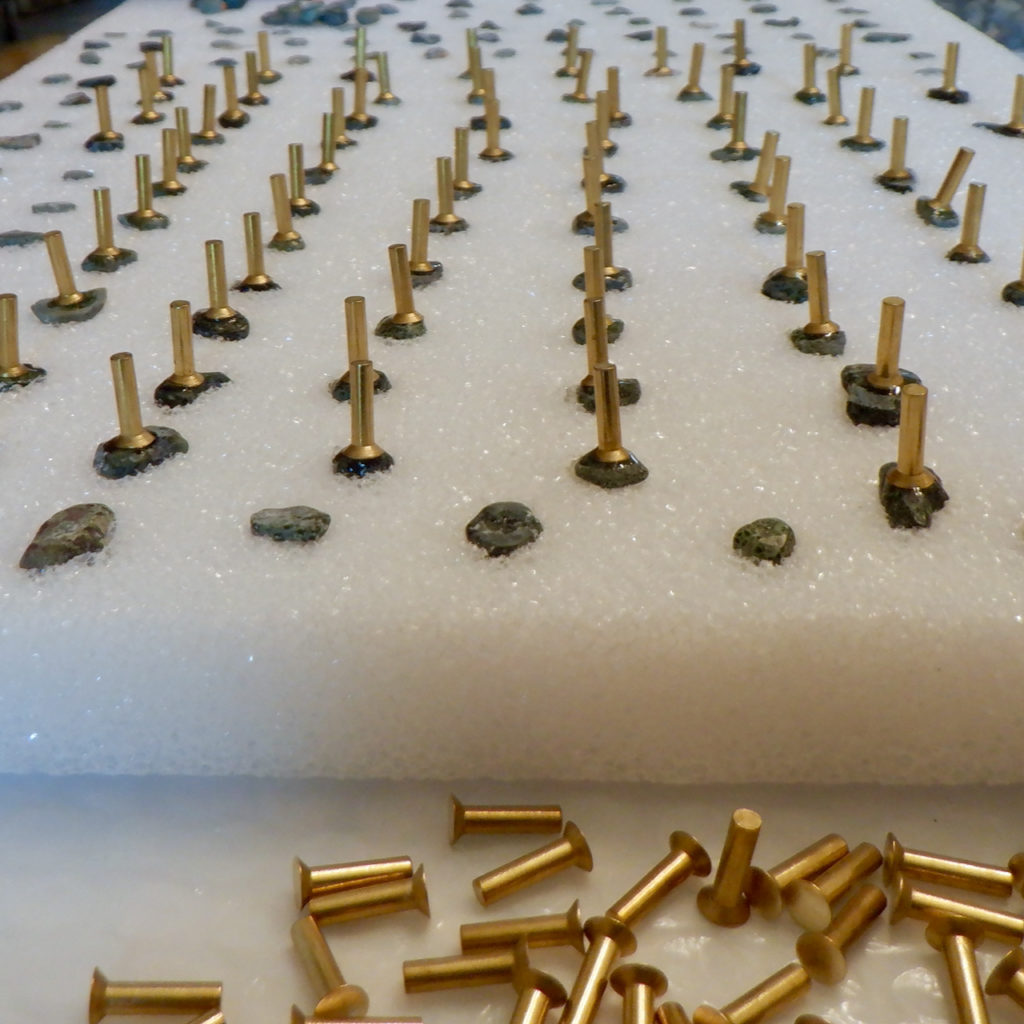


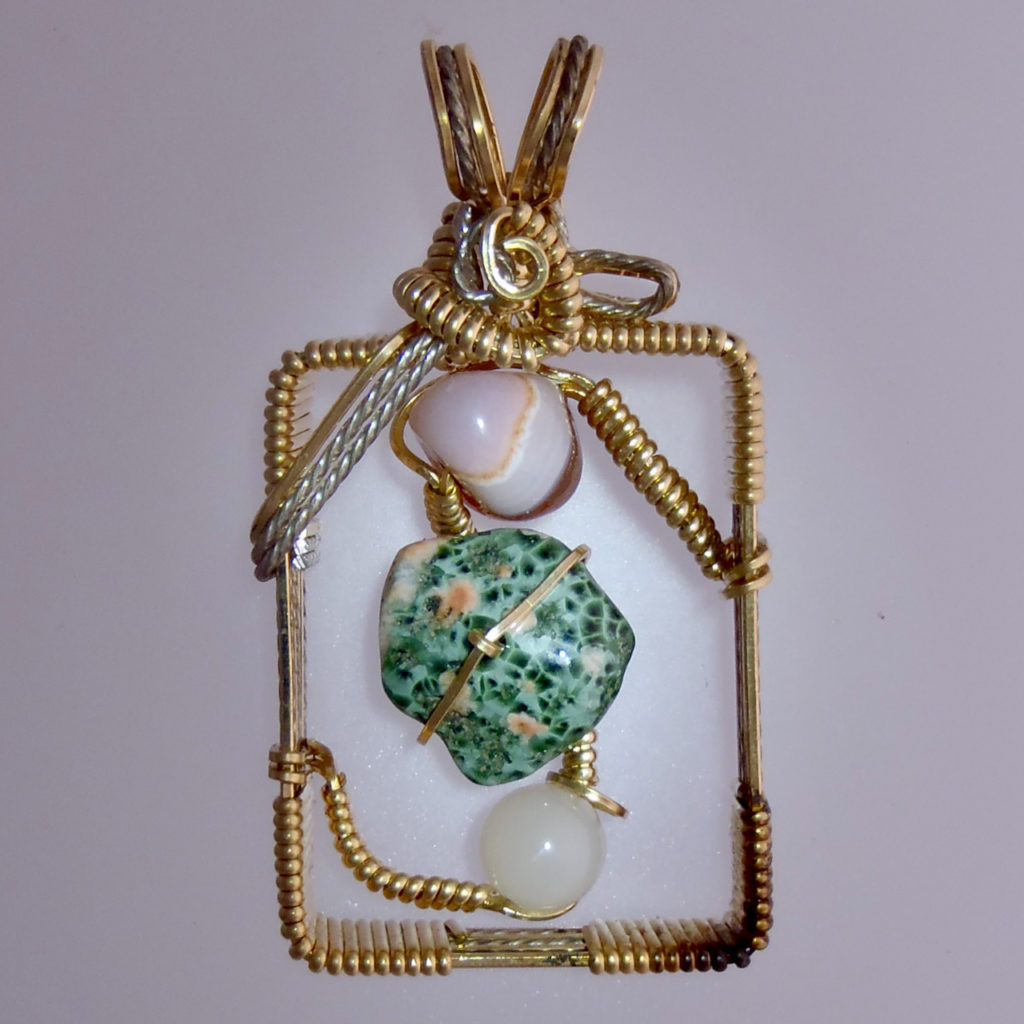
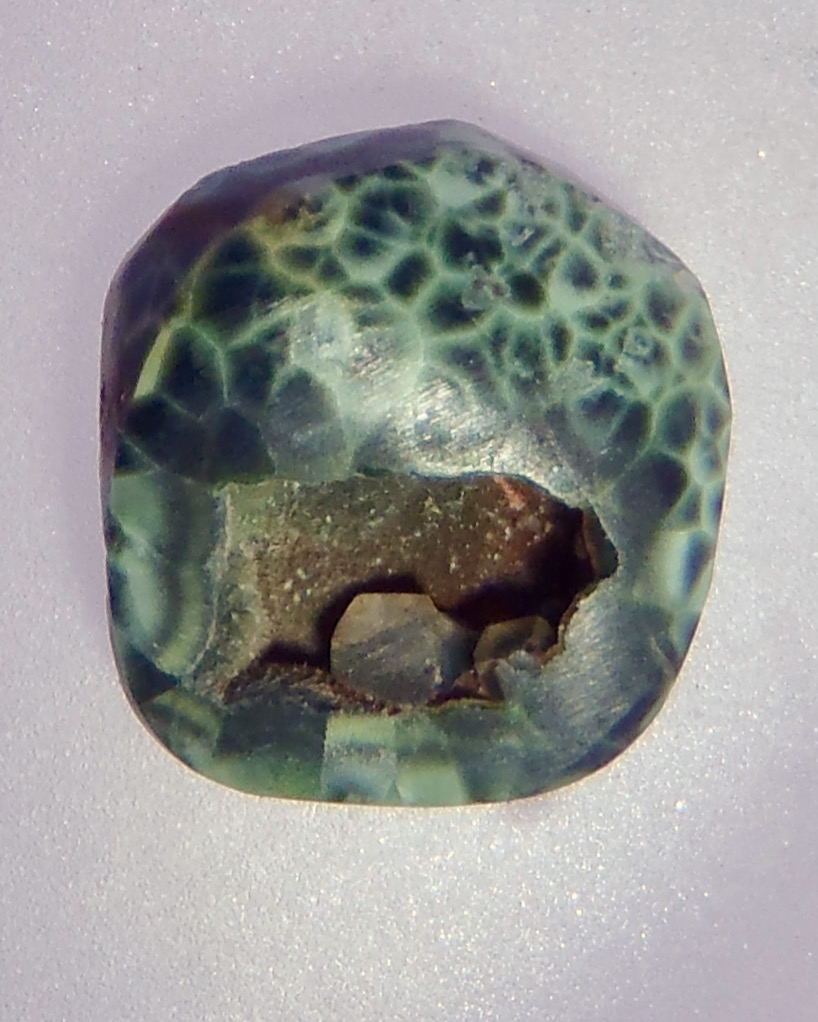
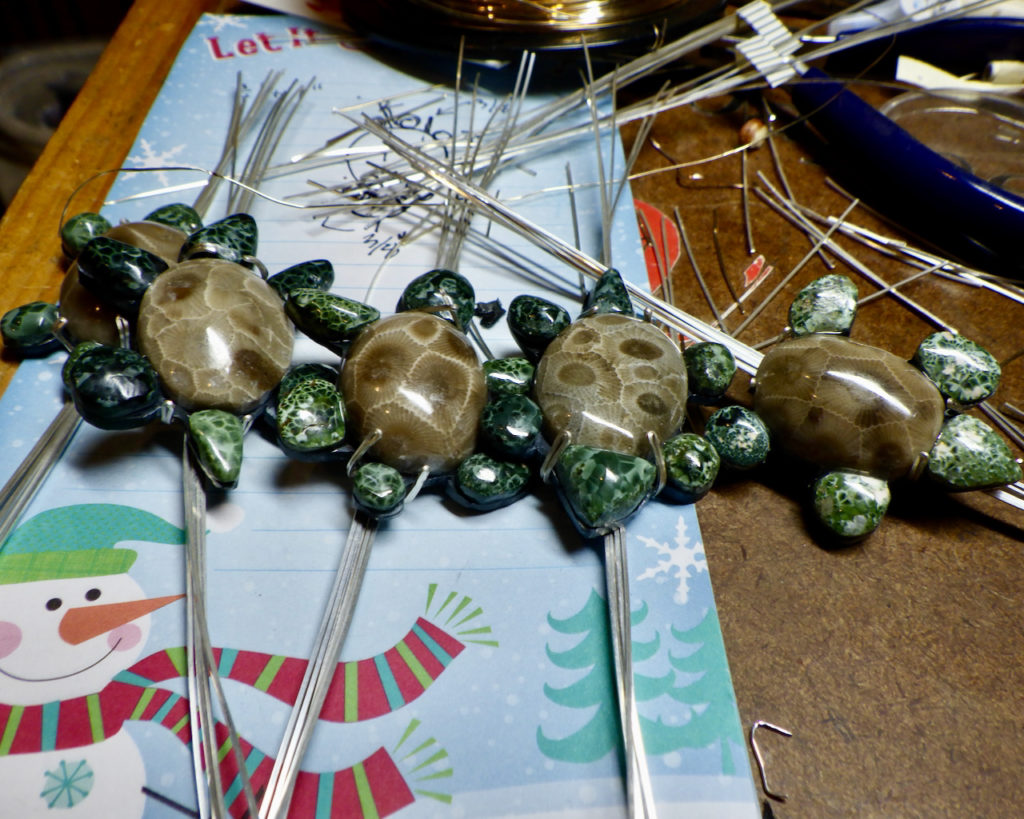
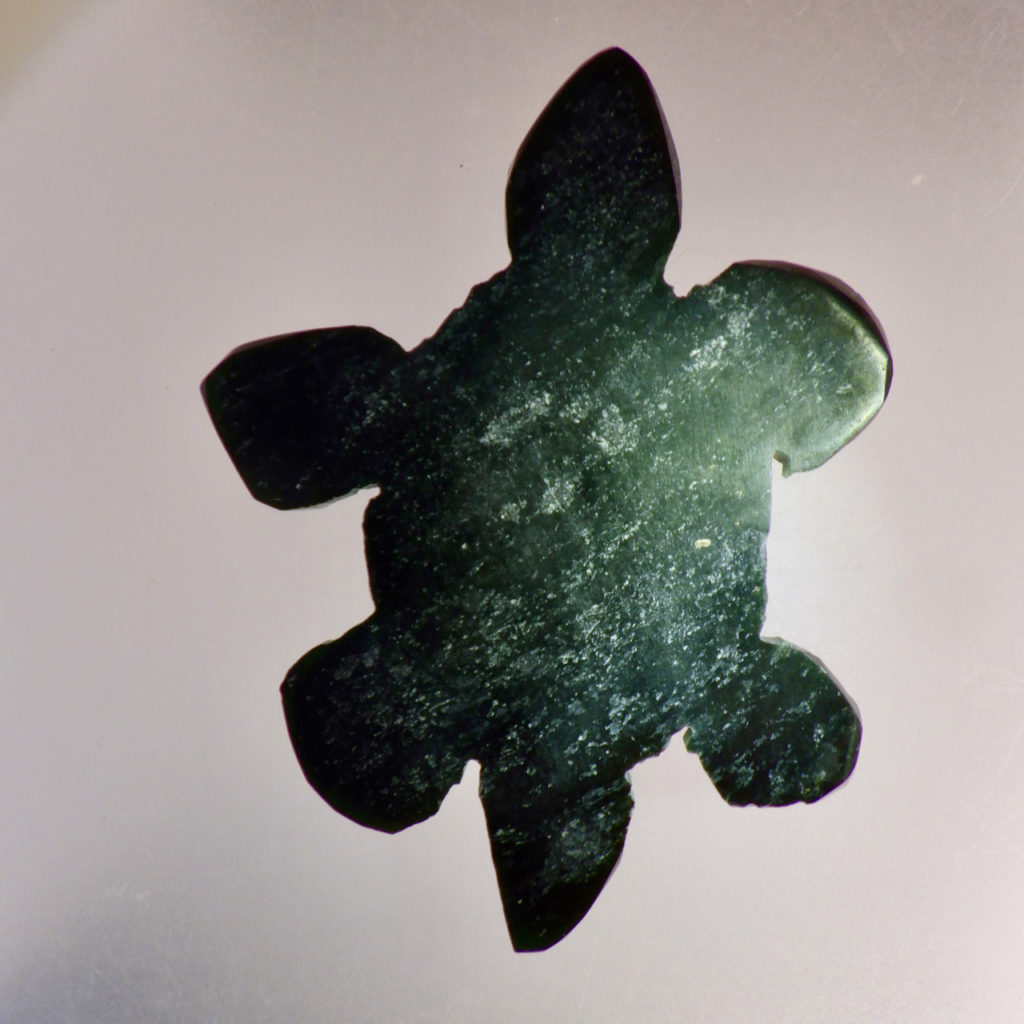



TURTLES
Let’s talk about one of the most challenging Pendant projects I’ve ever finished; TURTLES!.
I have actually been thinking about this for a few years, but realizing how much time, materials, and troubles it would be, I’ve put it off. Admittedly I took the cowards way out—it seemed I always had something that was more important to do! I needed to get my Mojo back.
My goal this year was to create what was a roadblock in my brain. Here is the idea. Michigan’s Official State Stone is the Petoskey Stone, and the State Gemstone is the ultra rare Isle Royale Greenstone. We live in NW Michigan where, if you know where to look, nice Petoskey Stones can be harvested.
Petoskey Stones are sometimes referred to as “Turtle Backs” because they resemble turtle shells. Isle Royal Greenstones are said to have an “Alligator Pattern”. Greenstone, if they have a nice pattern, also look like turtle appendages. What if I could combine these two beautiful Michigan stones and made a turtle pendant?
One of the major problems is matching Greenstone patterns so the turtle appendages have a cohesive look.
Recently I manufactured a set of these pendants which were challenging in many ways.
Each turtle required five greenstones that closely matched in size, pattern, and color. This required cutting and polish around hundreds of greenstones, which has taken place over several years. Most of the greenstones used in this project are from an Isle Royale Greenstone collection that I purchased several years ago. These are even more rare than Keweenaw Greenstones. Picking greenstones on Isle Royale is against National park policy. Decades ago authorities on the island were not that particular about guests picking us a few greenstones. Today rangers are quite strict about the regulations regarding picking up rocks and minerals in the national park.
After cutting and polishing all these small stones. Cutting small stones involves gluing them on dop sticks or holding them in your finger with the risk of scuffing your finger tips. Foolishly and unnecessarily I chose the bleeding option many times. Separating them off the dop sticks, pouring out on a table, sorting for size, shape, and color, and finally choosing stones that might be used together for turtles were some of the steps taken over time. Some had to go back for shaping so they could pass muster as heads or tails. Many of the greenstones are up to 10mm in size which makes them large for greenstones. The appendages are all nice enough they could have been used for feature stones in jewelry such as rings or necklaces.
The Petoskey Stones are found by us in several secret locations in northwest lower Michigan, but rarely from beaches. They were sorted 2-3 times for top quality nicely patterned for the turtle backs. They were cut and shaped, mounded in ovals, and polished to a glass-like finish.
The next problem was how to attach the appendages to the turtle; how was I going to join the Petoskey stones and the Greenstones? I looked for a material that could be a backer. What material could be thin enough and strong enough to do this? Jade is strong and tough, often used for guitar picks, so it is strong even when thin. The Petoskey stones and Greenstones were glued onto green jade wafers using a strong 2 part epoxy.
Cutting the turtles requires special lapidary tools and a careful touch. Believe me when I tell you that this procedure was challenging, complicated, and time consuming.
After cutting the turtles out, I developed a procedure for wire wrapping them, which hides the wires behind the turtle. When the turtles hand on a chain, you do not see the bail, or most of the wire wrapping, allowing for no distraction from the beauty of the the Patterns of the Petoskey stone and Greenstones.
It took me months of thought and work to create these pendants.
I cut out a dozen turtles, and posted them on Facebook, receiving over 2,600 likes. It seemed everyone wanted a turtle, but not everyone realized what these turtles might cost.
People wanted them for desk ornaments, or to add to their turtle collections. I think for a turtle collector, this may work, but for someone that wants to put a turtle comprised of sizable Isle Royale Greenstones and Jade just our on a deck; not so good. I would sell these without a bail on the back, but they are designed for wearing.
The first turtle release will be six pendants as Christmas gifts, and perhaps more of the dozen I’ve made, depending on popularity. The scarcity of Gem-Quality Greenstones will severely limit my product every year.
Making Turtles from Greenstones that otherwise could be rings or necklaces is somewhat frivolice, and from a business standpoint, perhaps not wise; but so be it.







